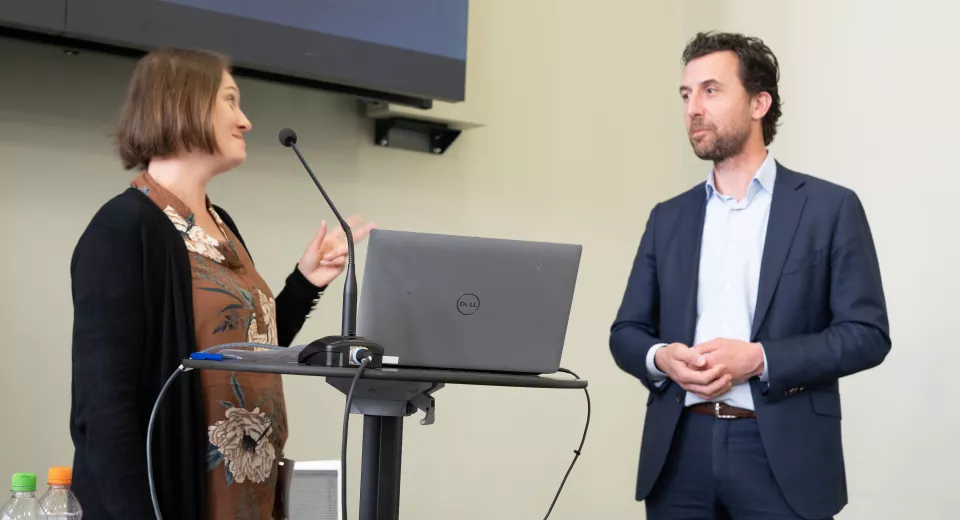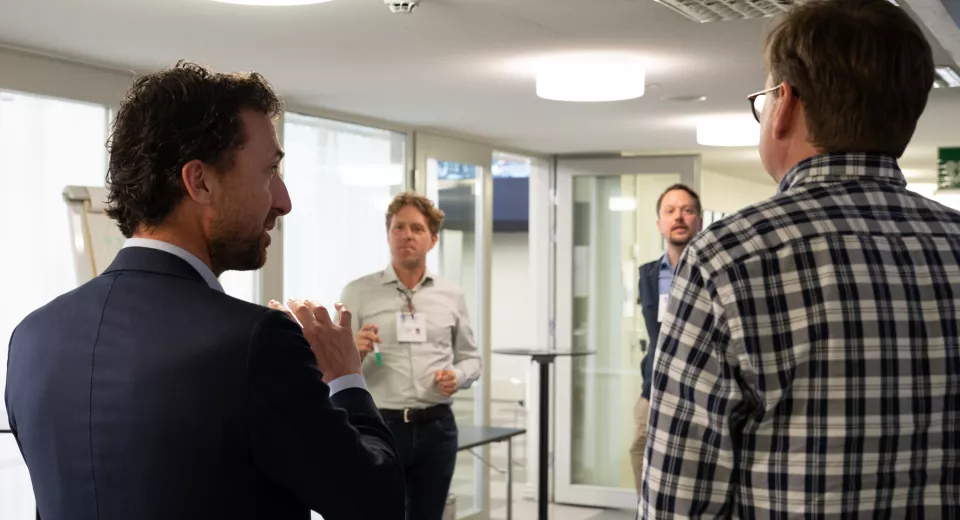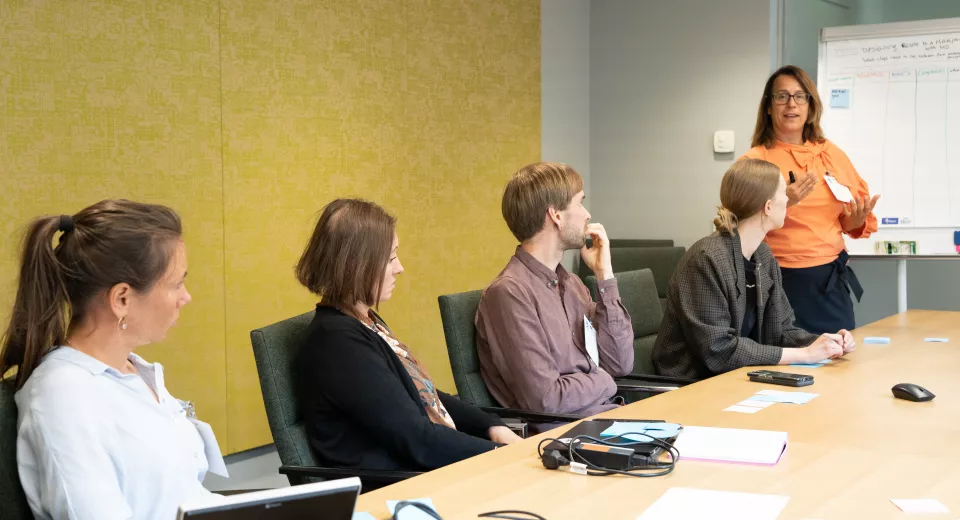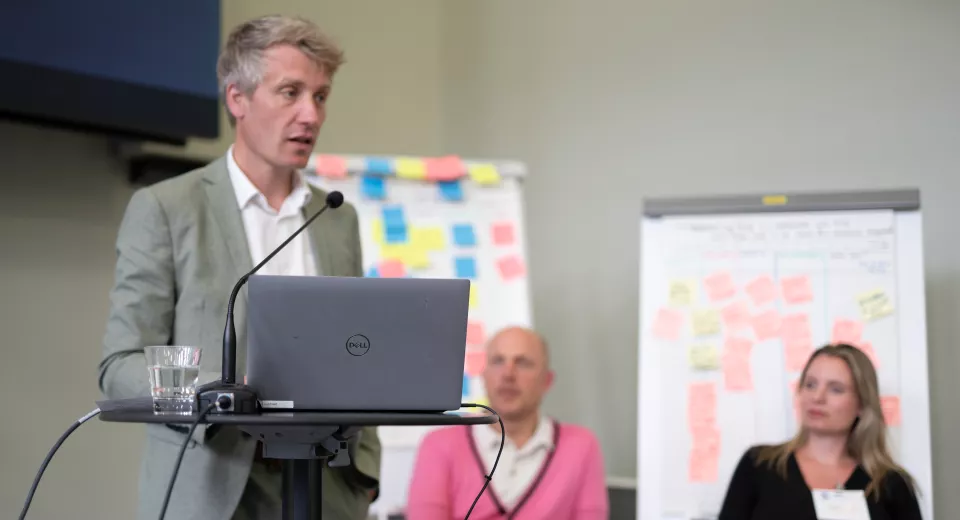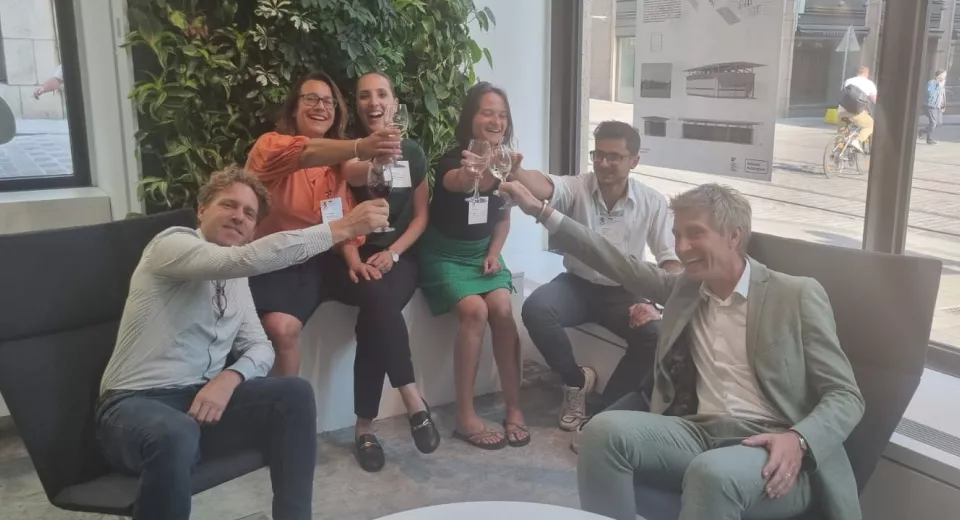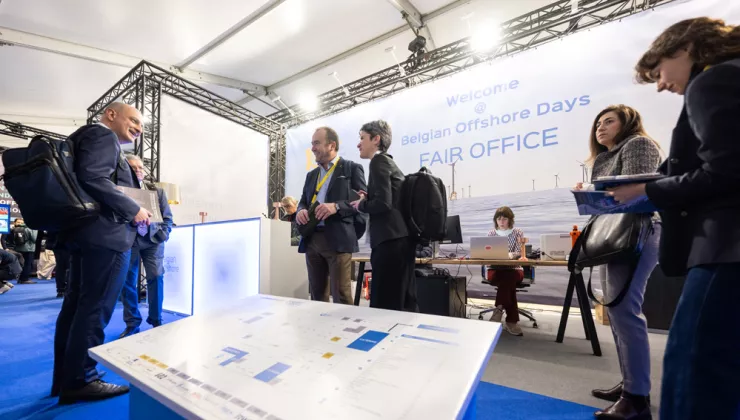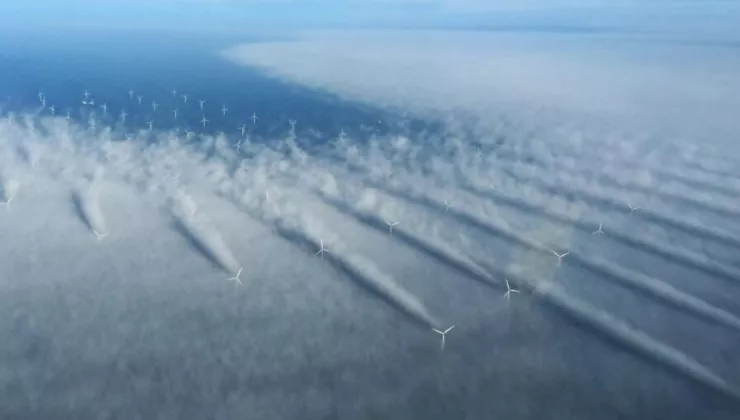Fixed structures at sea and nature inspired design
Implementation of a Sustainable Blue Economy (SBE) coincides with installing new and fixed infrastructures at sea. Ideally, these structures should be designed to create valuable nature. However, opinions differ as to the proper way to do this.
On 15 June, we exchanged views with over 50 policy makers, non-profit organisations, businesses and scientists from the North and Baltic Sea regions in Helsinki. Additionally, more than 60 people followed the event live online.
Results from this and previous CoPs on energy and food continuously feed into our policy brief to the European Commission. How can we use Marine Spatial Planning (MSP) in the most optimised way to create a sustainable blue economy? We believe this should be done through multi-use.
Within this scope, we have created the concept of a Maripark, which is envisaged as a sustainable nature inclusive business area at sea. But how should this maripark be conceived? How can we stimulate and accelerate innovation in this scope with our SME’s?
The most important takeaways of the fifth CoP meeting can be found below. If you want, you can also download a detailed report of the meeting.
Food for thought
Considering the largest transitions in the world, ie. energy, nature and food next to the challenge of climate change, it is essential to obtain a more qualitative biodiversity. Is it possible to build new offshore infrastructures with a decent nature-inspired design (NID) making a positive contribution to biodiversity?
A careful assessment of all choices is required. Restorative NID focuses on achieving a higher quality in the natural ecosystem in the long term. Examples are the creation of breeding places. Creative NID, on the other hand, focuses on obtaining a status quo or even a loss during the installation’s lifespan.
“Nature Inclusive Design? Hold (y)our horses, carefully think about the best for nature. The primary goal should be to enhance nature restoration, then, the primary focus should be on functional ecosystem assets; think about stepping stones to more habitat creation, spawning grounds, nursery grounds, etc.”
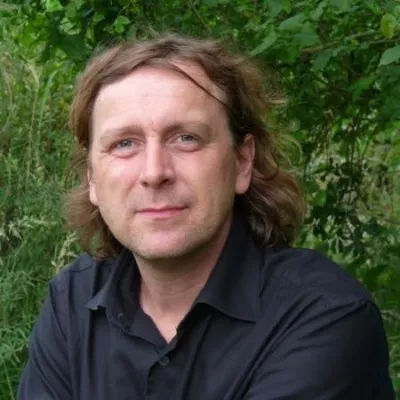
Prof. Steven Degraer
Preparation
Prior to building offshore infrastructure, most vulnerable ecosystems should be mapped. Multi-use can soften spatial and pressure on the environment, but also several restrictions: social impact (think about noise or visual pollution), technical capacity and economic feasibility should be key and equally important.
Ideally, future impact of climate change is assessed. NID considers balances between restoration, maintenance and creation of protected areas or biodiversity, BEFORE design. The overall goal should be maintaining or creating the ecosystem (service).
Monitoring data and data availability on biodiversity is key for entrepreneurs and the wider public. What about older infrastructure at sea? Removal or redesignation, it remains a vivid discussion during our CoP. A Maripark is so to speak a miniature version of a maritime spatial plan: similar considerations have to be made, such as an assessment of the sum of all possible effects.
Highlights
Nature organisations are a valuable partner to provide data and information for the assessment of Mariparks and nature inclusive designs. Consequently, these organisations as well as many other stakeholders should be involved in this as from the design phase.
More experience with setting up Mariparks is required. Pilot projects are important and make it possible to get insurance companies on board. Additionally, inclusion of NID in tenders can be very helpful.
Focus on naturally present species is key. The current ecosystem should be supported and not overwhelmed. Climate mitigation through carbon sequestration (via cultivation of algae) should furthermore be examined in greater depth.
While co-creating the princess Elisabeth energy island with nature inclusive design, our initial ambition was on species level. However, we quickly shifted to habitat creation due to a genuine involvement of excellent stakeholders and experts. Expert, policy and actual stakeholder co-designing processes are key for the actual implementation of large infrastructures.

Timothy Vanagt
Takeaways
Consulting relevant experts, entrepreneurs and nature organisations from the design stage onwards as well as informing and consulting policymakers and the public at large from the very beginning is essential in order to actually carry out such projects.
Visualise the plans and let everybody have a say throughout the process. Let us underline the importance of NID and high ecological standards for any (multi-use) project at sea and the sustainable blue economy. Let us move towards a nature-positive approach to the further sustainable economic development of the North Sea, taking into account the capacity of the ecosystem.
We encourage policy makers and scientists to join this transition, as this will ensure scale-up, insurance, infrastructure and safety.
More frequent and deeper communication about this is key.




